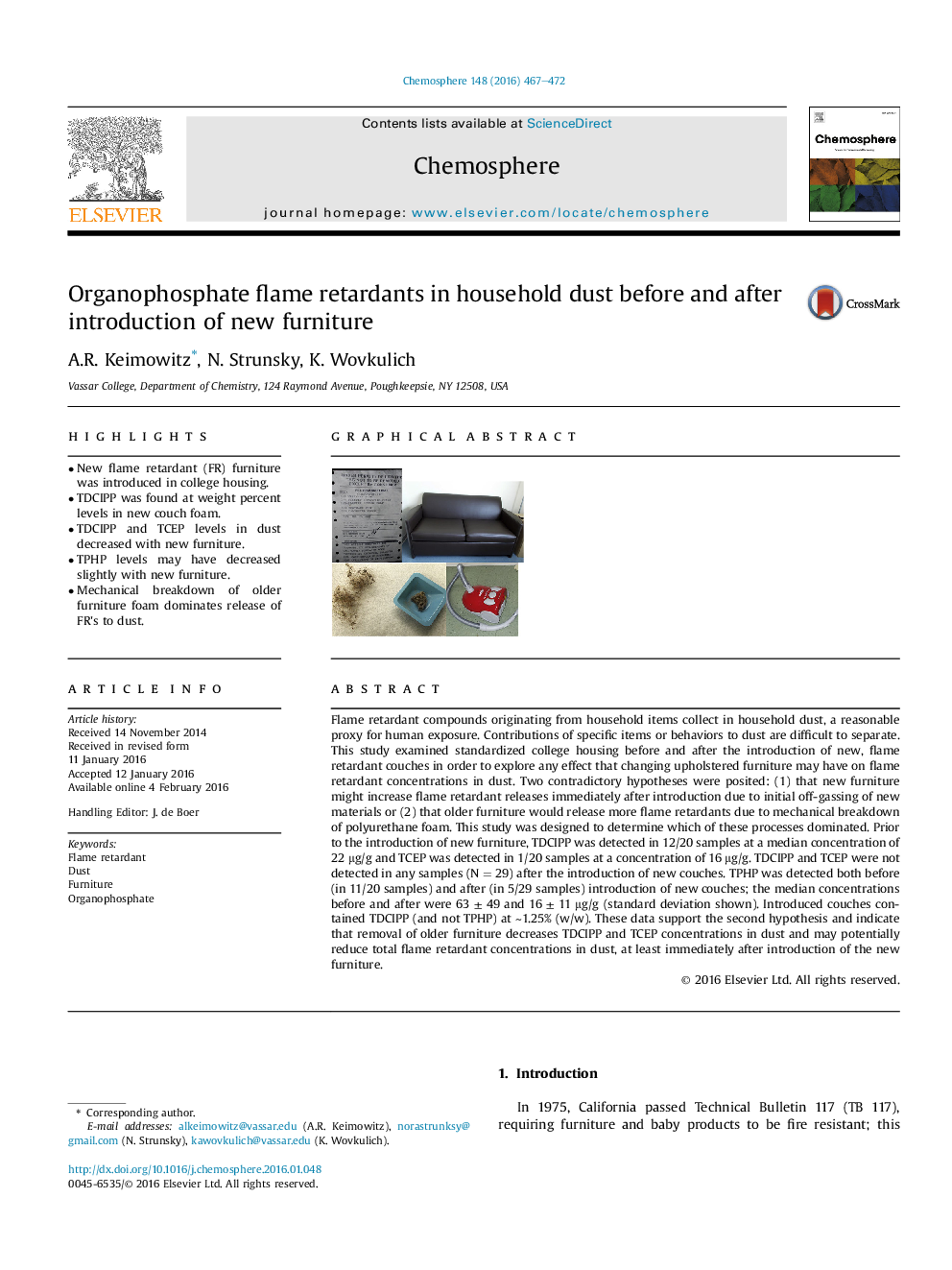| کد مقاله | کد نشریه | سال انتشار | مقاله انگلیسی | نسخه تمام متن |
|---|---|---|---|---|
| 4407830 | 1618823 | 2016 | 6 صفحه PDF | دانلود رایگان |
• New flame retardant (FR) furniture was introduced in college housing.
• TDCIPP was found at weight percent levels in new couch foam.
• TDCIPP and TCEP levels in dust decreased with new furniture.
• TPHP levels may have decreased slightly with new furniture.
• Mechanical breakdown of older furniture foam dominates release of FR's to dust.
Flame retardant compounds originating from household items collect in household dust, a reasonable proxy for human exposure. Contributions of specific items or behaviors to dust are difficult to separate. This study examined standardized college housing before and after the introduction of new, flame retardant couches in order to explore any effect that changing upholstered furniture may have on flame retardant concentrations in dust. Two contradictory hypotheses were posited: (1) that new furniture might increase flame retardant releases immediately after introduction due to initial off-gassing of new materials or (2) that older furniture would release more flame retardants due to mechanical breakdown of polyurethane foam. This study was designed to determine which of these processes dominated. Prior to the introduction of new furniture, TDCIPP was detected in 12/20 samples at a median concentration of 22 μg/g and TCEP was detected in 1/20 samples at a concentration of 16 μg/g. TDCIPP and TCEP were not detected in any samples (N = 29) after the introduction of new couches. TPHP was detected both before (in 11/20 samples) and after (in 5/29 samples) introduction of new couches; the median concentrations before and after were 63 ± 49 and 16 ± 11 μg/g (standard deviation shown). Introduced couches contained TDCIPP (and not TPHP) at ∼1.25% (w/w). These data support the second hypothesis and indicate that removal of older furniture decreases TDCIPP and TCEP concentrations in dust and may potentially reduce total flame retardant concentrations in dust, at least immediately after introduction of the new furniture.
Figure optionsDownload as PowerPoint slide
Journal: Chemosphere - Volume 148, April 2016, Pages 467–472
